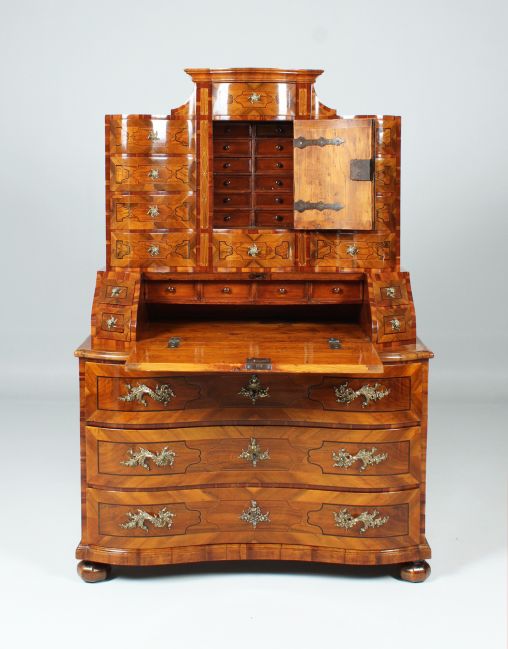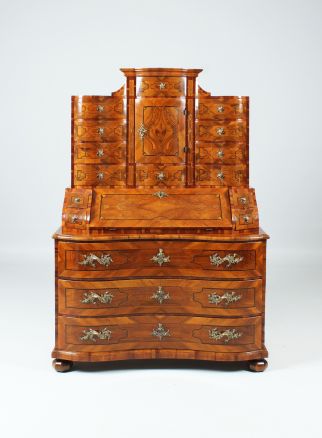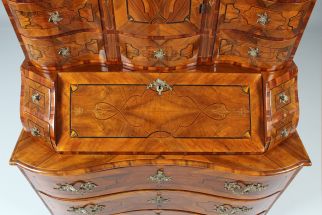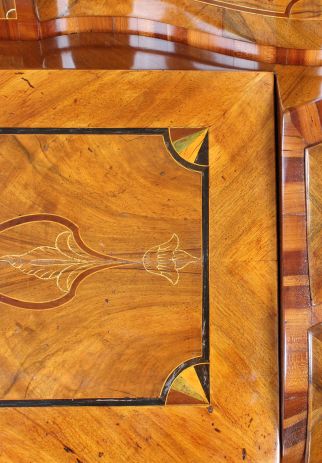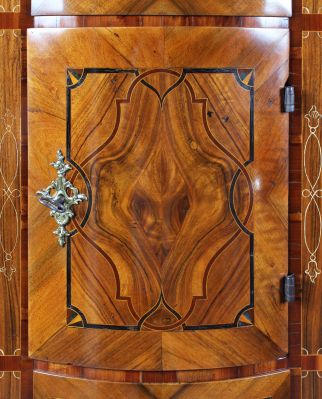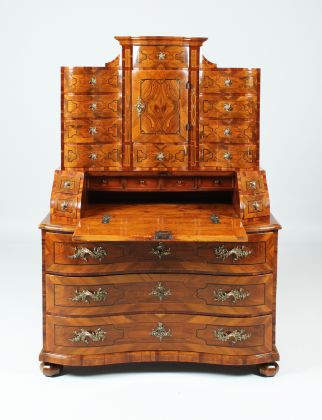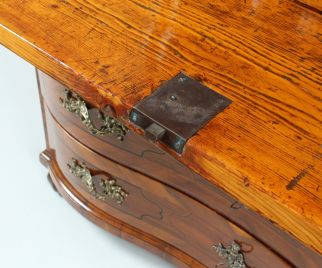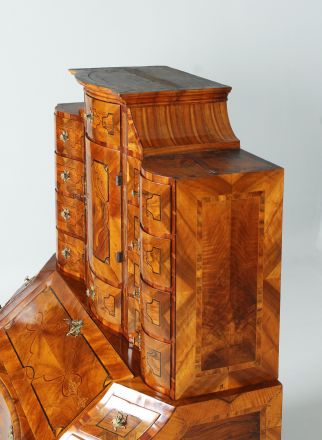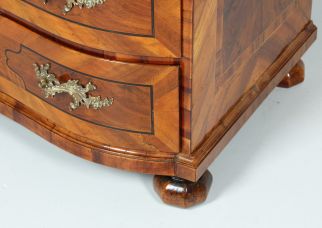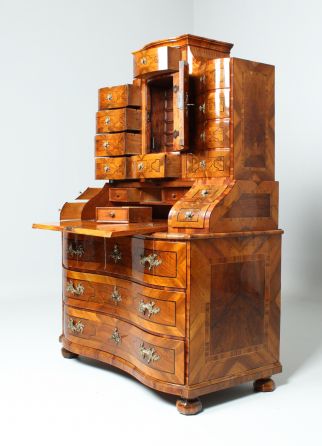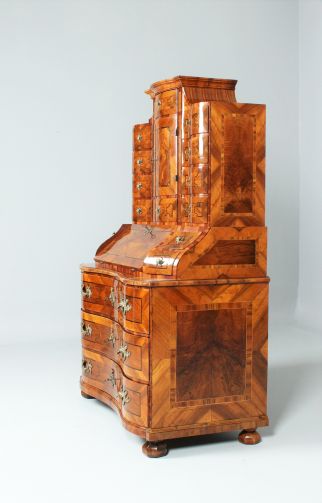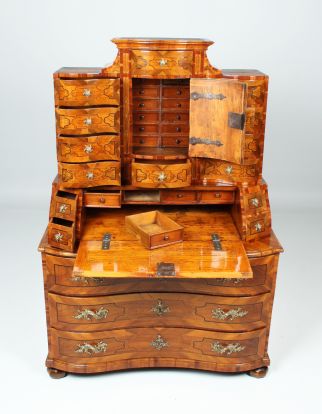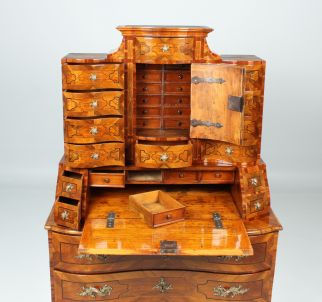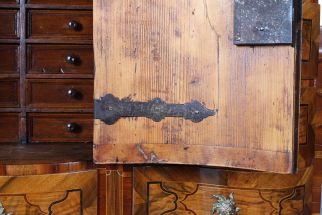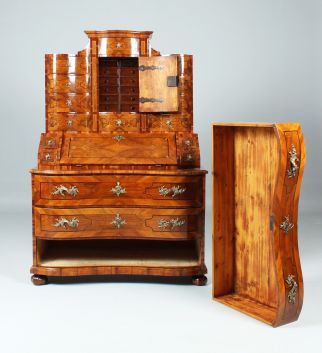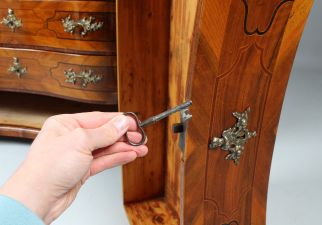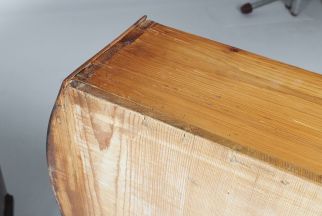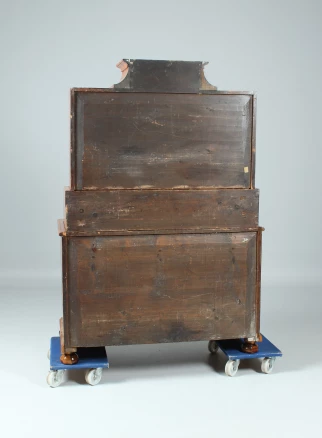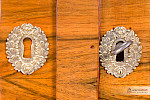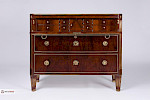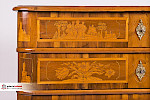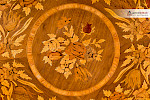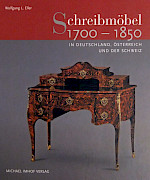Tabernacle secretary
Upper Bavaria
Walnut
Baroque around 1750
Dimensions: H x W x D: 179 x 123 x 62 cm
Description:
South German tabernacle secretary in walnut and plum veneer with inlays of mahogany, bog oak and maple.
Chest of drawers standing on original octagonal feet with a three-bay curved front.
Above it is the writing compartment behind the sloping flap. To the left and right of it are two drawers on top of each other, inside there are four more small drawers.
The top is a tabernacle compartment surrounded by ten drawers. Eight of the drawers can be locked by a central locking mechanism.
If we open the central door, we see twelve more small drawers inside.
On closer inspection, you will notice the many beautiful details of this baroque piece of furniture.
For example, all the walnut veneers run diagonally and guide the viewer's gaze to the harmoniously executed marquetry, which contributes to the overall harmonious picture through both its colouring and its geometry.
The side panels are also beautifully proportioned, their walnut root fillings giving the sides of the furniture a strong character.
The arrangement of the top drawer ensures that the secretary does not appear squat, but light, elegant and dynamic.
Worth knowing:
Derived from the chest of drawers, the top secretary developed into a piece of representational furniture in the 18th century. Like the chest of drawers, it became an important piece of furniture in both bourgeois and courtly interior design.
As a multifunctional piece of furniture, usually consisting of three sections, it represented a specialised refinement of the chest of drawers. It consists of a chest-like lower section with drawers. More rarely, this lower section also has two doors, sometimes with a cut-out knee space.
The writing section, often with a sloping writing flap in many different constructive and design variations, is placed on top of the lower section and is usually slightly recessed at its front edge. Above it is the top, which occurs in two basic forms: the two-door cantourge top, which can also be a display case top, and the tabernacle top, which occurs mainly in southern Germany, with a central door compartment and flanking rows of drawers on several levels.
In terms of construction, there are two variants of the top secretary: in southern and south-western Germany, there is mainly the three-part arrangement (à trois corps), while in central Germany, but also in Lower Saxony and in the north, the two-part arrangement (à deux corps) predominates. Here, the writing part is firmly connected to the lower part.
Technically, many achievements were used. Ingenious secret compartments, concealed mechanisms and fancy structures were created on the writing part. Also as a typical piece of 18th-century furniture, the top secretary, like the chest of drawers, develops into a representational object with decorative development, which in the case of courtly representatives can become highlights of furniture construction.
No epoch before or since brought it to such a highly developed blossom, of which especially these top furniture still bear impressive witness today.
[Source: Uwe Dobler - Baroque Furniture p. 184.]
Condition:
Restored and shellac polished condition. Authentic patina. The drawers run well and smoothly, all locks work.
Price: Sold!
Comparable pieces of furniture can be found in the specialist literature:
Wolfgang L. Eller - Writing Furniture 1700-1850 p. 66
Uwe Dobler - Baroque Furniture p. 207
Article found under: Secretaries
Tabernacle secretary
Video South German Baroque Secretary
Also interesting
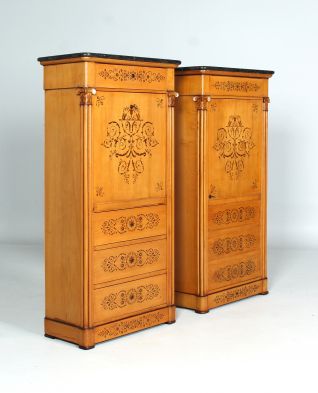
Couple - secretary and cupboard
France
Maple, rosewood, amaranth
Charles X around 1830
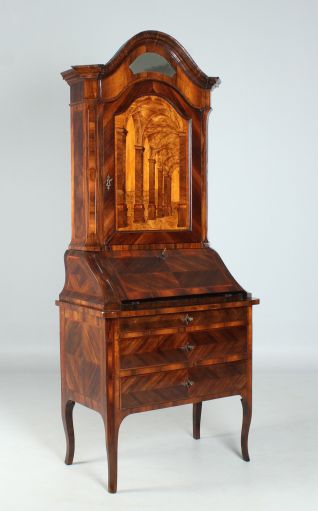
Secretary with Architectural Marquetry
Italy
Rosewood a.o.
second half 18th century
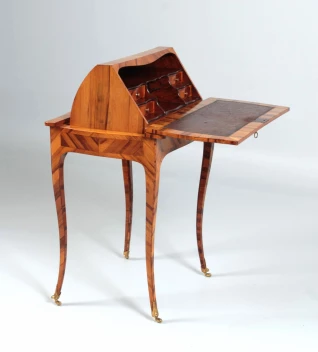
Convertible small desk - so-called Secrétaire à culbute
France
Rosewood
19th c.
